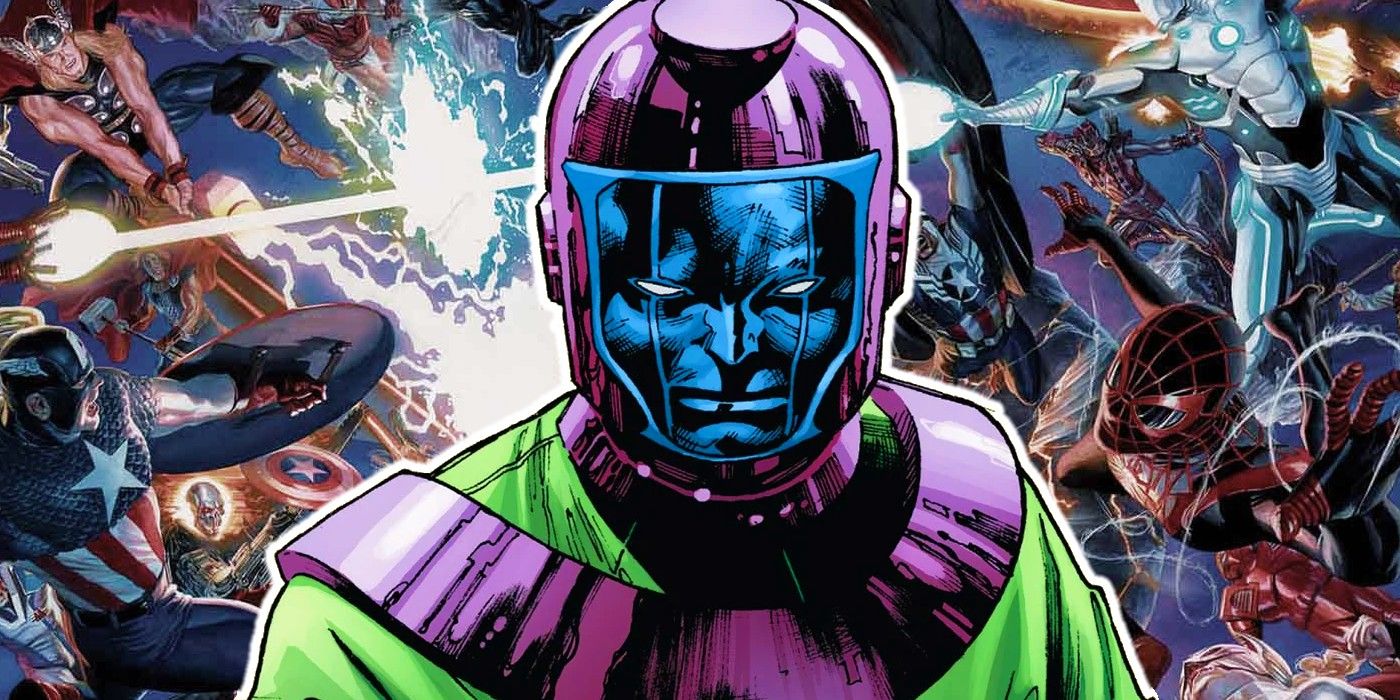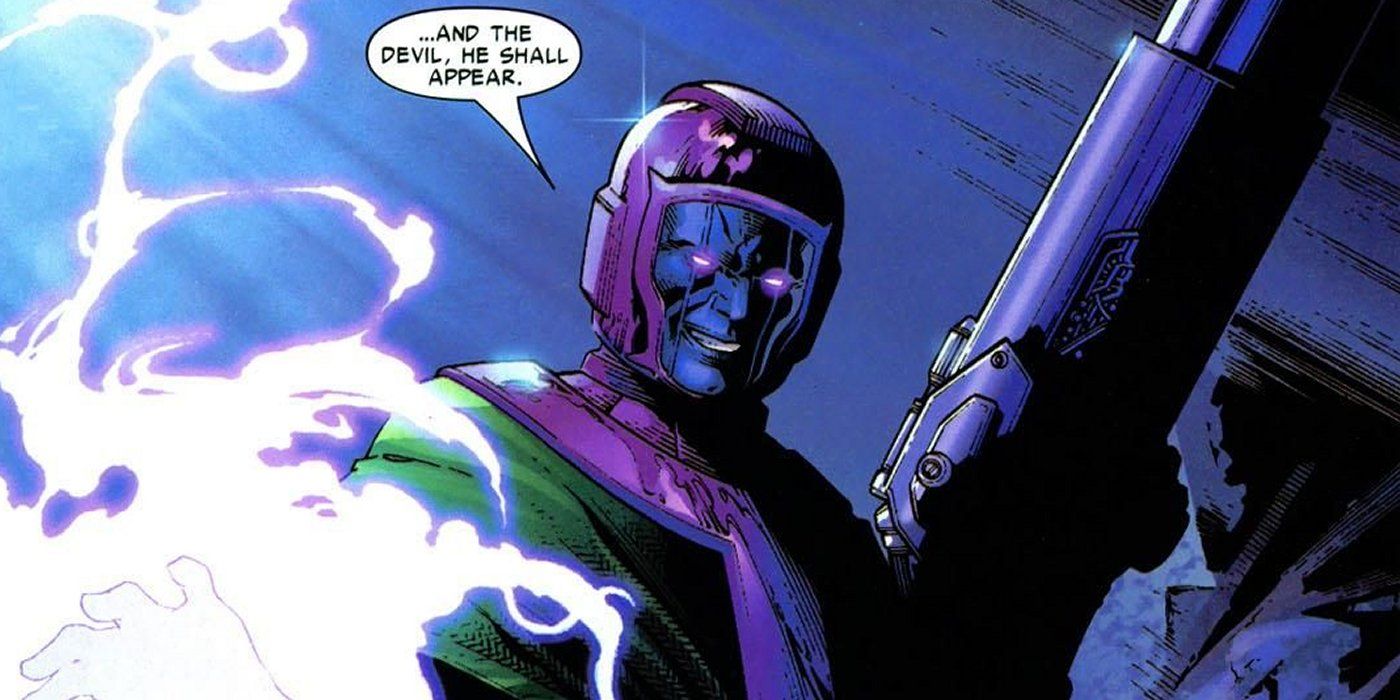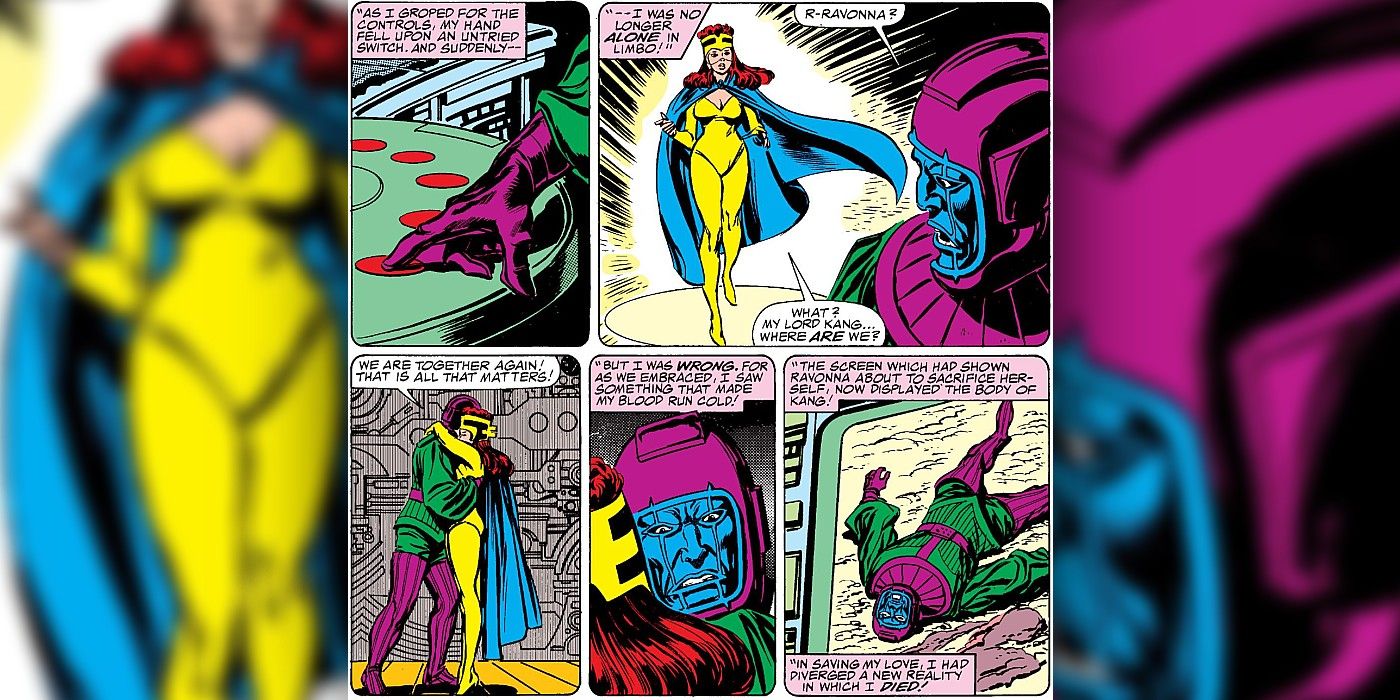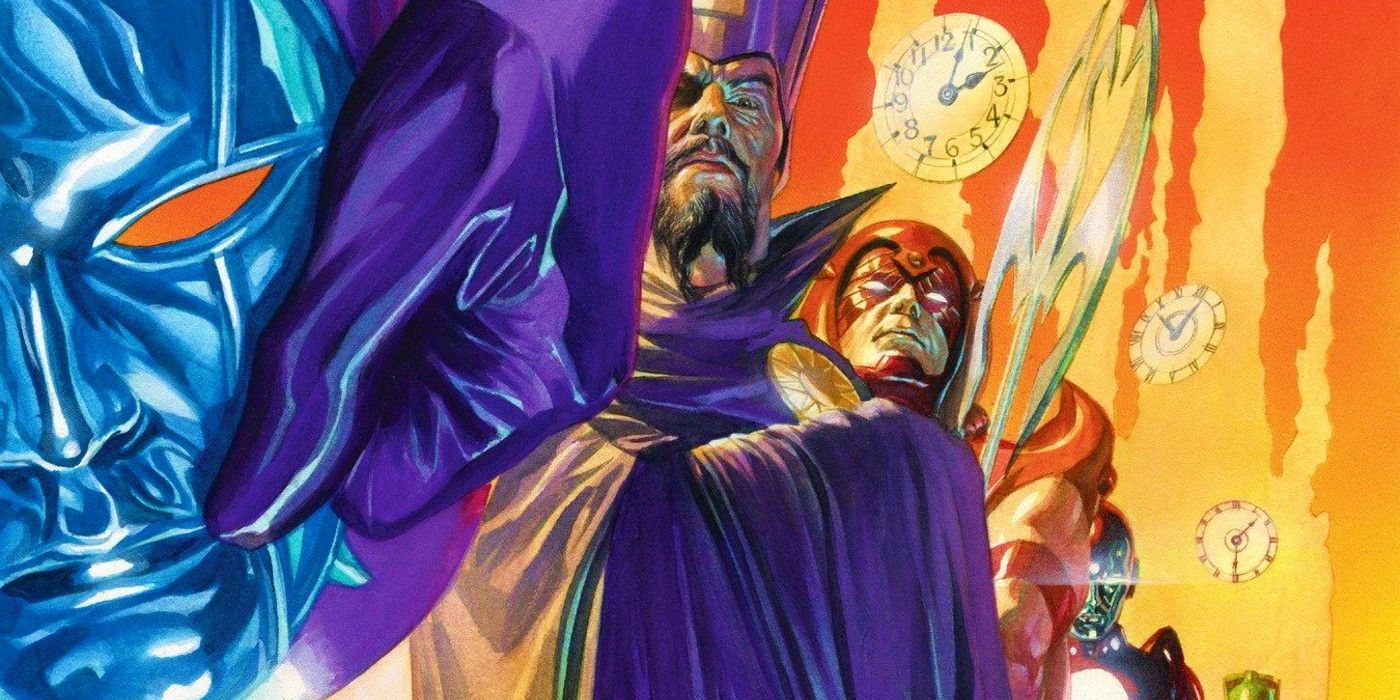Kang the Conqueror is a diabolical foe who has dealt Marvel's heroes some of their worst defeats and seems poised to enter phase 4 of the MCU in Ant-Man 3, played by Lovecraft Country star Jonathan Majors. Kang is likely to be if not the major threat of the next Marvel Cinematic saga, at least a major villain who will likely affect the past, present, and future of Earth's mightiest heroes. A time-traveling warlord, Kang uses his impossibly advanced technology to subjugate and rule societies of the past, not for material gain, but to satisfy his own desire to be seen as the greatest conqueror of all time. Almost inarguably, he is, so it's a good job that time and time and time again, Kang the Conqueror has literally been his own worst enemy.
A longtime foe of the Avengers and Fantastic Four, Kang first appeared by name in 1964's The Avengers #8, but his life is best understood in stages. Kang was born in the 31st-century as Nathaniel Richards, a potential descendant of Reed Richards, the Fantastic Four's Mr. Fantastic. Kang was a committed student bullied by his peers. Discovering a time machine created by Doctor Doom, he traveled back into history and began the next stage of his life. Appearing in Ancient Egypt, he took the name Pharaoh Rama-Tut, encountering the Fantastic Four in 1963's Fantastic Four #19. After spending some time under the alias of the Scarlet Centurion, Kang attempts to return home, instead discovering an apocalyptic future. The former pharaoh uses his advanced technology to become this timeline's unquestioned ruler: Kang. But unsatisfied with ruling a wasteland, Kang set out to seize control of a more comfortable era, sparking a lust for conquest that, along with his time-traveling abilities and advanced weaponry, turned him into a despot for the ages.
All clear? Well, it shouldn't be. While Kang lives by a strict set of personal rules, he's not averse to tampering with the timestream, and this has led to him creating countless "divergent" versions of himself. Traveling back to set himself on the path of conquest at an earlier age, Kang terrifies his younger self, who runs straight to the modern-day Avengers to tell them of Kang's terrible plans. Unable to find the Earth's mightiest heroes, Nathaniel takes on the guise of Iron Lad and seeks out the next generation of heroes, founding the Young Avengers - a team who scupper Kang's plans despite him taking control of Captain America and Iron Man. While Iron Lad eventually agrees to return to his place in the timestream, he's instrumental in creating a heroic team that defeated Kang once and would go on to protect the world from him again.
But not every divergent version of Kang strayed from his path. In "The Once and Future Kang," an Avengers storyline from 1986, Kang reveals that in using time travel to save his beloved Ravonna (and killing his past self in the process,) he learned that his major decisions were creating alternate Kangs in new timelines. Unable to bear the fumbling losses of his other selves, Kang forms a council with two other Kangs he deems worthy and sets about executing his doppelgangers for bringing dishonor to his name.
In fact, it emerges that one of the other Kangs on the council is dedicated to being the only Kang the Conqueror, using his new position to kill off all the "inferior" Kangs before turning on his brothers. He kills one of the trio and uses his body to draw the other into combat with the Avengers, boobytrapping his advanced weaponry to backfire and kill him when used. The plan is successful, and it's this Kang - a divergent version of the original - who has gone on to trouble the Avengers, the Fantastic Four, and even Ant-Man throughout Marvel history.
Sadly for this Kang, it quickly emerged that there was one more divergent Nathaniel Richards he had failed to account for. This version went by the name Immortus - a future version of Kang who had turned his back on a life of violence, deciding instead to guard the timestream and prevent Kang from achieving ultimate power. Immortus tricks Kang into grasping the psyche-globe - a device containing the memories of all the Kangs he had killed - but the transfer is too much for the conquerer, who flees out into "Limbo," later to return again and again. Sadly, 2006's "Kang War One" Avengers storyline confirmed that Kang has manipulated his own history to breaking point, splitting his potential selves into individual people, meaning that while one potential Nathaniel Richards did become Immortus, that is no longer the future waiting for Kang the Conqueror.
But Kang hasn't just been a thorn in his own side thanks to time travel - he's also beaten himself in other ways. In the epic "Kang Dynasty" - a 2001 Avengers story by writer Kurt Busiek and artists including Alan Davis, Kieron Dwyer, Ivan Reis and Manuel Garcia - Kang finally successfully conquers the modern day. The Avengers are beaten and imprisoned, with the Wasp even signing a formal declaration of surrender, and Kang luxuriates in his most sought-after victory, supported by his son Marcus, the new Scarlet Centurion. Sadly, it all comes tumbling down. In a key moment, Marcus allows Captain Marvel to seize the key to Kang's defeat, though it's due to an unspoken connection between hero and villain rather than any ill-feeling towards his father. Kang is defeated thanks to Marcus' actions, but is content to have been taken down in a grand battle, leaving his son as the new conqueror.
That is, until Marcus stages a daring rescue. Kang is distraught - his code of honor means that he must now kill Marcus due to his betrayal, and he reveals that Marcus is one in a long line of clones Kang hoped would propagate his line, all of which he has ultimately murdered due to their failure. That's right, even when he's not being defeated by his past, future, or alternate timeline selves, Kang the Conqueror is able to find a way to ruin his own plans and ultimately slay himself in kind.




